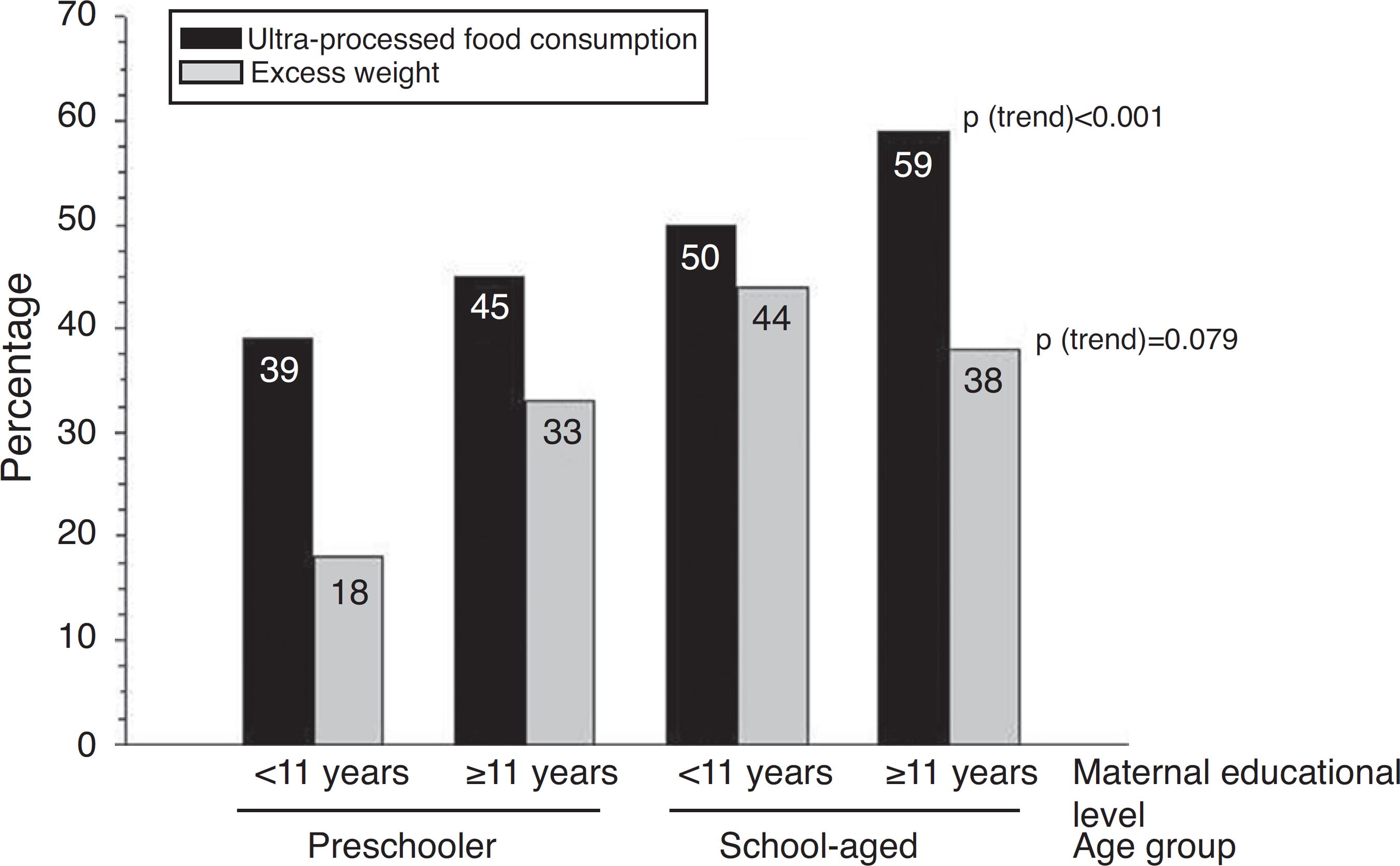Abstract
Objectives
To evaluate the contribution of ultra-processed food (UPF) on the dietary consumption of children treated at a Basic Health Unit and the associated factors.
Methodology
Cross-sectional study carried out with a convenience sample of 204 children, aged 2-10 years old, in Southern Brazil. Children's food intake was assessed using a 24-h recall questionnaire. Food items were classified as minimally processed, processed for culinary use, and ultra-processed. A semi-structured questionnaire was applied to collect socio-demographic and anthropometric variables. Overweight in children was classified using a Z score >2 for children younger than 5 and Z score >+1 for those aged between 5 and 10 years, using the body mass index for age.
Results
Overweight frequency was 34% (95% CI: 28-41%). Mean energy consumption was 1672.3 kcal/day, with 47% (95% CI: 45-49%) coming from ultra-processed food. In the multiple linear regression model, maternal education (r = 0.23; p = 0.001) and child age (r = 0.40; p < 0.001) were factors associated with a greater percentage of UPF in the diet (r = 0.42; p < 0.001). Additionally, a statistically significant trend for higher UPF consumption was observed when data were stratified by child age and maternal educational level (p < 0.001).
Conclusions
The contribution of UPF is significant in children's diets and age appears to be an important factor for the consumption of such products.
KEYWORDS
Food intake; Nutritional status; Children; Fast-food

